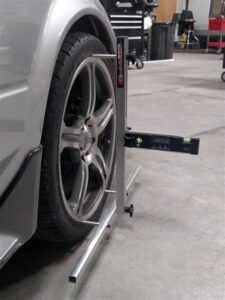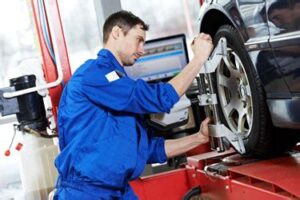Discover the significance of proper alignment for classic cars, its impact on performance, and essential specifications to achieve optimal alignment for your vintage vehicle.When it comes to preserving the beauty and performance of classic cars, understanding proper alignment specifications is essential. Classic vehicles, often beloved for their vintage charm and unique styling, require meticulous care to maintain their roadworthiness and driveability. This blog post will delve into the nuances of classic car alignment, shedding light on why correct alignment is critical for optimal performance and safety. We’ll explore the implications of incorrect alignment, which can lead to uneven tire wear, compromised handling, and safety issues. Additionally, we’ll provide vital alignment specifications tailored for classic cars, ensuring you have the knowledge needed to keep your treasured vehicle in prime condition. Finally, we’ll guide you on how to achieve proper alignment, empowering you to enjoy every drive with confidence. Join us on this journey to keep your classic car running smoothly and looking its best.
Understanding Classic Car Alignment
Classic car alignment is a crucial aspect of maintaining vintage automobiles, ensuring that the vehicle handles properly and wears tires evenly. Unlike modern cars, classic cars often have different suspension designs and alignment specifications, making it essential to understand how alignment works in these older models.
In layman’s terms, alignment refers to the adjustment of a vehicle’s suspension, which affects how the wheels make contact with the road. When it comes to classic cars, this can involve slight variations in specifications that can significantly impact the performance and safety of the vehicle.
Proper alignment consists of three main angles: camber, caster, and toe. Each angle plays a role in how the car drives and reacts to road conditions. It’s important to regularly check and adjust these specifications to ensure optimal performance. For example, the wheels should be parallel and perpendicular to the road and to each other for maximum stability.
| Alignment Type | Specification | Description |
|---|---|---|
| Camber | 0° to -1° | Angle of the wheels in relation to the road. Negative camber improves cornering. |
| Caster | 2° to 5° | Angle of the steering pivot. Positive caster stabilizes steering. |
| Toe | 1/16 to 1/8 toe-in | Angle of the wheels in relation to the centerline of the vehicle. Affects tire wear. |
By maintaining the correct alignment specifications for your classic car, you can ensure a smoother ride, prolong tire life, and enhance the overall driving experience. Understanding these elements can make a signi
Importance of Correct Alignment
Correct alignment is crucial for the performance and safety of your classic car. It not only enhances the driving experience but also prolongs the lifespan of various components. When a vehicle is properly aligned, it ensures that the wheels are positioned at the correct angles, allowing for optimal tire wear and ensuring a smoother ride.
One of the main benefits of proper alignment is improved handling. When your classic car is aligned correctly, it responds better to steering inputs, providing a more precise driving experience. This is especially important for classic cars that may have unique steering systems or suspensions compared to modern vehicles.
Moreover, incorrect alignment can lead to various issues such as uneven tire wear, which can become a costly problem over time. Without proper alignment, tires may wear out faster, requiring frequent replacements, and potentially jeopardizing your safety on the road. In essence, maintaining correct alignment is not just about comfort; it’s an integral
Impact of Incorrect Alignment
Incorrect alignment in classic cars can lead to a wide range of issues that not only affect driving performance but also compromise safety. When the wheels of a vehicle are not aligned properly, the tire wear can become uneven, resulting in the need for frequent replacements. This not only increases maintenance costs but also reduces the lifespan of the tires significantly.
Moreover, vehicles with incorrect alignment tend to pull to one side, making it difficult and uncomfortable to drive. This can be particularly dangerous on highways or during high-speed driving, where the driver must constantly compensate for the car’s tendency to veer off course. The steering response can also be affected, leading to a less responsive and more challenging driving experience.
In addition to performance concerns, incorrect alignment can lead to significant strain on other components of the car. Parts like suspension and steering systems may suffer from premature wear and tear due to the misalignment. This can translate to higher repair costs and more time spent in the shop, detracting from the joy of owning a classic car.
Key Alignment Specifications for Classic Cars
When it comes to ensuring the optimal performance and longevity of classic cars, understanding the correct alignment specifications is crucial. Classic cars, much like their owners, have unique characteristics that require specific attention to detail. This is particularly true for their suspension systems, which affect everything from tire wear to overall handling.
In general, there are three major alignment specifications to keep in mind for classic cars: camber, caster, and toe. Each of these parameters has a significant role in how the vehicle behaves while driving, and getting them right is essential for maintaining the classic aesthetic and driving experience.
| Specification | Ideal Range | Impact of Incorrect Setting |
|---|---|---|
| Camber | -0.5 to -1.5 degrees | Tire wear on inside or outside edges, poor traction |
| Caster | 2 to 5 degrees positive | Steering instability, wandering on the road |
| Toe | 0 to 1/8 inch toe-in | Uneven tire wear, poor directional stability |
It is essential to consult a professional mechanic who understands the specific alignment specifications for your classic vehicle. Each classic car may have its own unique quirks and specifications that differ from mainstream vehicles. Paying attention to these details will not only ensu
How to Achieve Proper Alignment
Achieving proper alignment is crucial for the performance and longevity of your classic car. Misalignment can lead to uneven tire wear, poor handling, and reduced safety on the road. Below are essential steps to ensure your classic car is aligned correctly.
1. Check Tire Pressure: Always begin with verifying that your tires are inflated to the manufacturer’s recommended pressure. Uneven tire pressure can affect the alignment and overall handling.
2. Inspect Suspension Components: Regularly examine the suspension components for wear and damage. Pay close attention to bushings, ball joints, and tie rods, as worn parts can negatively impact alignment.
3. Use a Professional Alignment Service: For the best results, it is advisable to utilize a professional alignment service that specializes in classic cars. They will have the necessary equipment and expertise to achieve accurate alignment.
4. Follow Alignment Specifications: Every classic car model has specific alignment specifications. Refer to service manuals or contact experts to ensure the adjustments meet the recommended specifications for your vehicle.
5. Regular Maintenance Checks: To maintain proper alignment, have your classic car regularly inspected, especially after any modifications or repairs. Routine checks can help identify potential issues before they arise.
Correct alignment enhances your classic car’s performance, safety, and overall driving experience. Prioritizing this aspect will not only keep your vehicle running smoothly but also preserve its value for years to come.
Frequently Asked Questions
What are classic car alignment specifications?
Classic car alignment specifications refer to the precise measurements and adjustments required for the wheel alignment of vintage and classic vehicles, ensuring optimal handling, tire wear, and drivability.
Why is wheel alignment important for classic cars?
Wheel alignment is crucial for classic cars as it affects tire wear, vehicle handling, and overall safety. Proper alignment ensures that the wheels sit parallel and travel in the same direction.
What are common alignment specifications for classic cars?
Common alignment specifications for classic cars typically include toe angle (usually between 0.05 to 0.15 inches), camber angle (typically within 0 to -0.5 degrees), and caster angle (ranging from 2 to 7 degrees, depending on the model).
How often should classic cars be realigned?
Classic cars should be realigned every 6,000 to 10,000 miles, or more frequently if there are noticeable issues with handling or tire wear. It’s also advisable after any suspension work or accidents.
Can I perform a wheel alignment myself on a classic car?
While it is possible to perform a wheel alignment at home using basic tools, it is recommended to seek professional assistance. Alignment requires precision and specialized equipment to achieve the correct specifications.
What are the signs of misalignment in classic cars?
Signs of misalignment in classic cars include uneven tire wear, pulling to one side while driving, a crooked steering wheel, and vibrations in the steering wheel.
Is there a difference between modern and classic car alignment specifications?
Yes, classic cars often have different specifications for alignment compared to modern vehicles due to variations in suspension design and technology. It’s important to refer to the specific alignment specifications for each classic model.





